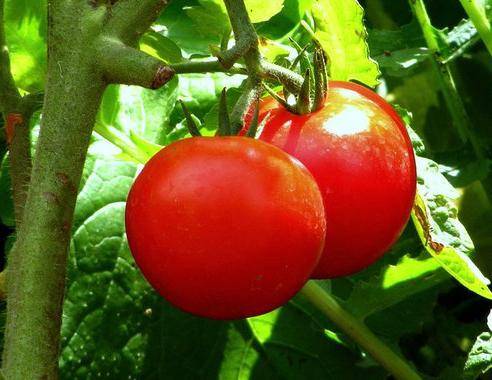Content
It is difficult to imagine a garden crop more popular than tomatoes. But being from warm tropical countries, they have difficulty adapting to the sometimes harsh Russian conditions. It is especially difficult in this sense for gardeners in the northern regions, as well as Siberia and the Urals. Not all summer residents have the opportunity to build a greenhouse or greenhouse for growing vegetables, but they really want to enjoy fresh tomatoes from their garden.
Especially for these areas, breeders from the Northwestern region developed a new tomato variety called Bullfinch. This variety has not yet been included in the State Register of Russia and can sometimes be found on sale under the name Snegiri. Its name itself already speaks of the cold resistance of tomato bushes of this variety. But it also has other characteristics that are attractive to any gardener.
Description of the variety
The Bullfinch tomato was specially bred for cultivation in open ground conditions in Siberia, the Far East, the Urals and the North-West of the European part of Russia. It is known that the climatic and weather conditions of these regions are not at all suitable for growing tomatoes.
In short summer conditions, it is very important that tomatoes can ripen as quickly as possible. The Bullfinch tomato can be called super early ripening, since the first tomatoes ripen after 90-95 days from the appearance of mass shoots. In the conditions of the North-Western region, when growing the Bullfinch tomato in open ground without additional shelter, the first harvest can be harvested around July 20-25.
Interestingly, due to the early ripening period, you can try to sow this tomato variety directly into open ground. Of course, in the conditions of the middle zone and the Urals, it is better to sow under cover with a double layer of film and protect young shoots from return frosts. But, in this case, the bushes without picking will be able to produce the maximum possible yield - up to 3 kg per bush - although at a later date than usual.
Tomato Bullfinch can be classified as a determinate variety of tomatoes. This means that it is very limited in growth, the trunk is very strong and the entire appearance of the tomato bush is solid and squat. It grows in height only to 35-40 cm and does not require pinching at all, and at the same time pruning and gartering. This, of course, makes caring for tomato bushes much easier, although when a bountiful harvest ripens, the bushes still need support, otherwise the branches may break under the weight of the fruit. Also, to improve ventilation and prevent fungal diseases, all lower leaves from the base should be gradually removed.
The inflorescence of this tomato variety is of an intermediate type. The first brush begins to form after 6-7 leaves. The rest - every 1-2 sheets.
If we take into account the early ripening periods of the Snegir variety of tomatoes, we can say that it is characterized by good yield - on average 5-6 kg of fruits per square meter. meters.
In addition, with abundant fertilizing with various fertilizers, primarily nitrogen, the period of fruiting is delayed. As a result, a tomato variety that is early in terms of ripening can turn into a medium one. Beginner gardeners often encounter this fact when growing ultra-early tomato varieties.
The Bullfinch tomato is sufficiently resistant to most diseases inherent in the nightshade family, primarily to late blight. In addition, it is quite drought-resistant and can tolerate short-term lack of water. All these qualities, combined with short stature and tolerance to insufficient lighting, make it easy to grow tomatoes of this variety on the balcony and even indoors.
Characteristics of tomatoes
For gardeners trying to grow tomatoes in less than favorable conditions, it is very important that the resulting fruits have all the characteristics of full-fledged tomatoes. And the Snegir variety will not disappoint them in this sense. Its fruits have the following characteristics:
- The shape of tomatoes is traditionally round, they are smooth and aligned.
- During the ripening process, the fruits acquire a bright red color, and at the stage of technical maturity they are dark green.
- The pulp of tomatoes is juicy, and the skin, although thin, can cope with cracking of the fruit.
- Despite the small size of the bushes, the Bullfinch variety tomatoes have quite decent sizes; the weight of one fruit averages 140-160 grams. In particularly favorable conditions, the weight of the fruit can reach 200 grams.
- Tomatoes have quite good marketability because they are rarely damaged by diseases.
- The taste characteristics of tomatoes are good; they can be eaten fresh and used for various types of preservation.
Reviews from gardeners
The tomato variety Bullfinch, the characteristics and description of which you could read above, receives good reviews from summer residents and gardeners, primarily due to its unpretentiousness to a wide variety of growing conditions.
Conclusion
Perhaps the Snegir variety of tomatoes will not amaze you with their dessert taste, but you must admit that it is difficult to find another variety of tomatoes that would produce a good harvest of full-fledged, weighty tomatoes in conditions of insufficient heat and in the shortest possible time.














